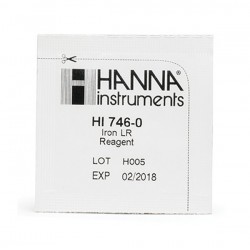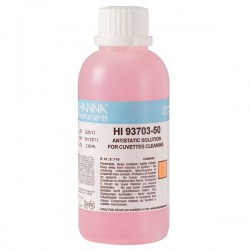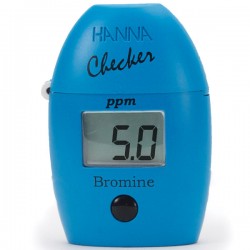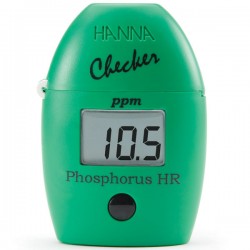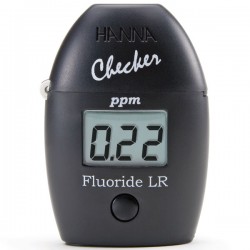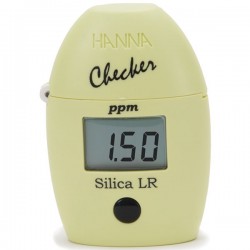

HI-746 Iron Low Range Checker for Freshwater
In Stock 3 Items available
HI-746
The HI-746 Iron low range Checker is a simple, accurate and cost effective way to measure low ranges of iron in water. Checker®HC is supplied with reagents for 25 tests. Use code HI-746-25 (25 tests) for future purchases.
The HI-746 Iron low range Checker is a simple, accurate and cost effective way to measure low ranges of iron in water.
Designed as a more accurate alternative to chemical test kits, the HI-746 provides quick, accurate results in four easy steps.
HI-746 uses an adaptation of the TPTZ method.
Ideal for:
- Fresh water aquariums only
- Water quality
- Education
- Industrial
- Municipal water
Key features:
- Small palm-sized design
- Accurate from ± 20 ppb ±5% of reading
- Dedicated to a single parameter
- Auto power off after 10 minutes of inactivity
- Built-in timer for timed reaction readings
Order Information
The HI-746 Iron low range Checker is supplied with sample cuvettes with caps (2), Iron low range reagent starter kit x 25 (re-ordering information HI-746-25 x 25 tests), glass cylinders with rubber cap (2), battery, instructions and quick start guide.
Also available: HI-746-11 Calibration set
Also available: HI-721 Iron High Range (ppm)
Four steps. One click. Instant Readout.
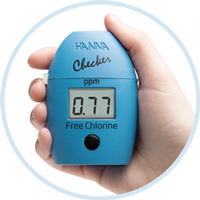 1. ‘Zero’ the Checker®HC with your vial & water sample inside
1. ‘Zero’ the Checker®HC with your vial & water sample inside
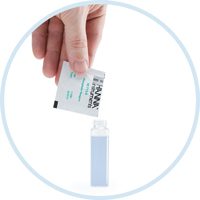 2. Take the vial out and add your reagent
2. Take the vial out and add your reagent
 3. Place your vial into your Checker®HC
3. Place your vial into your Checker®HC
 4. Press the button and read the results
4. Press the button and read the results
Use HI-746-25 Reagents for HI-746 Iron LR handheld Colorimeter - Checker®HC x 25 tests.
Use HI-746-11 Calibration Check Set for HI-746 Iron LR handheld Colorimeter - Checker®HC.
Safety Data Sheets
When using any form of chemical, such as Hanna reagents, it is important you download the relevant safety data sheet and make yourself aware of any precautions you should take when handling the chemical. You can access our library of safety data sheets and download a copy by following the link below.
Please note that the '-' in HI- products should be removed from all searches to find the correct information.
Read More
| Range | 0 - 999 ppb | |
| Resolution | 1 ppb | |
| Accuracy (@ 25°C) | ± 20 ppb ± 5% of reading | |
| Light Source | LED @ 575 nm | |
| Light Detector | Silicon photocell | |
| Environment | 0 to 50°C (32 to 122°F); RH max 95% non-condensing | |
| Battery Type | (1) 1.5V AAA | |
| Auto-off | After 10 minutes of non-use | |
| Dimensions | 81.5 x 61 x 37.5 mm (3.2 x 2.4 x 1.5") | |
| Weight | 64 g (2.25 oz.) | |
| Method | adaptation of the TPTZ method |



